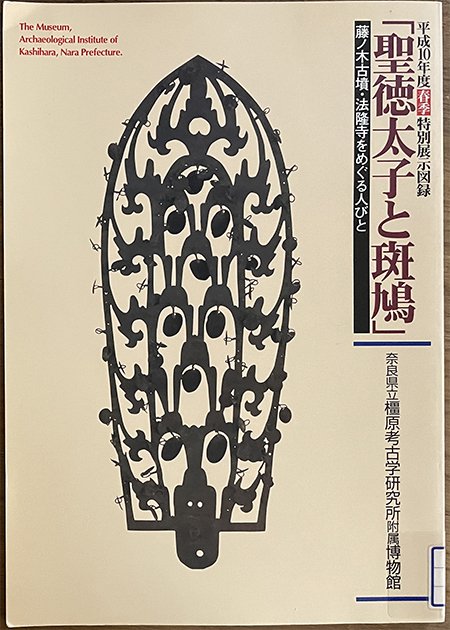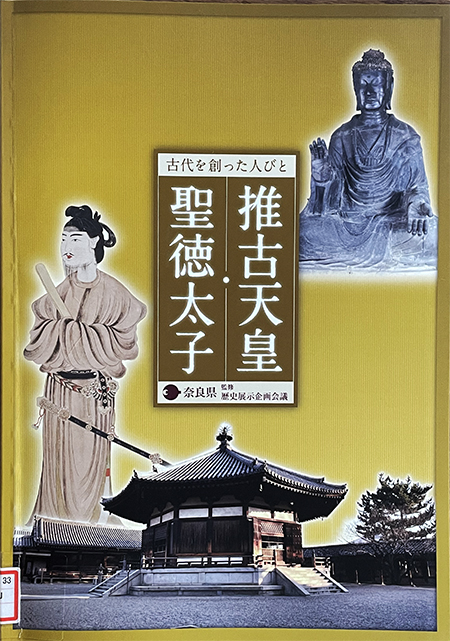


先日、東京国立博物館・法隆寺宝物館で聖徳太子絵伝との遭遇を経験して以来、関連資料をあれこれ探究したり、友人から書籍を譲り受けたりして資料がどんどん蓄積してきています。日本史は少年期に源平合戦ものに惑溺させられて以来、生涯を貫く強い興味分野としてあり続けていましたが、そのなかで聖徳太子の頃の部分は、エアポケットのようになっていたことに気付かされた。
で、WEBで検索していたら北海道では「聖徳太子絵伝」に関する書籍資料として、奈良県立博物館の1965年の展覧会「図録」が1箇所だけ北海道立図書館に存在していることを知った。住宅取材などで各地を訪れるとその地域の歴史背景的な部分の把握のために博物館とかの地域の研究施設にはよく訪問する。
地域の住宅を考えるときに、さまざまな「文化風土性」がその背景になっていることは当然の前提なので、それを踏まえると取材に重層性をもたらしてくれる。そういった意味で各地の博物館的な施設の学芸員・研究者にお願いして直接お話を伺ったりすることもある。非常に興味深い視点が得られる。
大変貴重な資料であった「聖徳太子絵伝」関連展示会の図録の深みを知らされて、基礎的な部分での理解が深まったのですね。で、その資料返却のために再訪して再度図書館の検索システムを利用させてもらったら、目に止まったのは不思議と同様の経緯で博物館・研究施設ので展示に際して編纂された資料類に強く惹かれていた。
写真上の2点は、飛鳥京の苑池の考古発掘調査を行った「橿原考古学研究所」附属博物館の編纂になるもの。一昨年にこの発掘調査のニュースにふれてこの博物館を訪問させていただき、学芸員の方にさらに最新の研究情報を直接会話で開示いただいたりもしていました。
そういう経緯もあってすっかり目が点になって写真のような資料を貸出させていただいてきました。歴史好きの凡百としてはまことに新鮮な刺激を共有させていただける次第。
どうも最近、そういった地道な研究成果への思いが強くなってきて、3番目の表紙写真も含めて強く惹かれた資料類は「博物館などの展示会図録」というものに集中してきていることを再認識。
わたしはこれまでこうした博物館・研究施設などを訪問すると必ず図録のようなものをほぼ入手してきています。実際に施設展示を参観して、その体験記憶と照合させながら再確認・追体験できるので、非常に有益な「機縁」再生機能を持っていると思っていました。が、さらに図録それ自体からも、研究レベルでの最前線情報が得られることにも思いが至ってきた次第です。
人間、知識欲求はきっと死ぬまで持続可能。こういう導きの資料に感謝したいと思います。
English version⬇
Museum and research institute “catalogs” are quite stimulating.
When I search for materials in the library, I find that I am strangely drawn to the catalogs of exhibitions at museums and research institutes. I feel a sense of real time as the points of questions at the researcher’s level are exposed. I am very interested in the
Since my recent encounter with the picture biography of Prince Shotoku in the Gallery of Horyuji Treasures at the Tokyo National Museum, I have been exploring related materials and acquiring books from friends. Japanese history has been a strong field of interest throughout my life since I was dazzled by the Genpei wars in my youth, but I realized that the part about the time of Prince Shotoku was like an air pocket in the field.
I found that in Hokkaido, there is only one copy of the Nara Prefectural Museum’s 1965 exhibition catalog in the Hokkaido Public Library as a book reference on “Shotoku Taishi E bien” when I searched on the Web. When I visit various regions for housing research, I often visit museums and other regional research facilities to gain an understanding of the historical background of the area.
When considering housing in a region, it is a natural assumption that there are various “cultural climates” in the background, so taking this into account adds layers to the coverage. In this sense, we sometimes ask curators and researchers at museum-like facilities in various regions to speak directly with them. This gives us very interesting perspectives.
You were informed of the depth of the catalogue of the exhibition related to the “Shotoku Taishi Eaden” exhibition, which was a very valuable material, and you gained a deeper understanding of the basic aspects of the exhibition. When I revisited the library to return the materials, I was again allowed to use the library’s search system, and what caught my eye was a strong attraction to the materials compiled for the exhibition at the museum/research facility for the same mysterious reason.
The two items in the photo above were compiled by the museum affiliated with the Archaeological Institute of Kashihara, which conducted archaeological excavations of the garden ponds of Asuka-kyo. I had visited this museum the year before last when I was exposed to the news of this excavation, and the curator had further disclosed the latest research information to me through direct conversation.
This is the reason why I was so interested in the museum that I was able to borrow the materials shown in the photo. As an ordinary history buff, it is a fresh stimulus for me to share.
Recently, I have become more and more interested in the results of such steady research, and I have realized again that the materials I have been strongly attracted to, including the third cover photo, have been concentrated in “exhibition catalogs of museums and other institutions.
Whenever I have visited such museums and research facilities, I have almost always obtained some kind of catalogue. I have always thought that these catalogs have a very useful function of reproducing “connections” because they allow me to reconfirm and relive my experiences by comparing them with my memories of actually visiting the facility and seeing the exhibits. However, I have also come to realize that the catalog itself also provides information on the front lines at the research level.
I am sure that our desire for knowledge is sustainable until we die. I would like to express my gratitude for this kind of guiding material.
Posted on 6月 24th, 2023 by 三木 奎吾
Filed under: こちら発行人です







コメントを投稿
「※誹謗中傷や、悪意のある書き込み、営利目的などのコメントを防ぐために、投稿された全てのコメントは一時的に保留されますのでご了承ください。」
You must be logged in to post a comment.